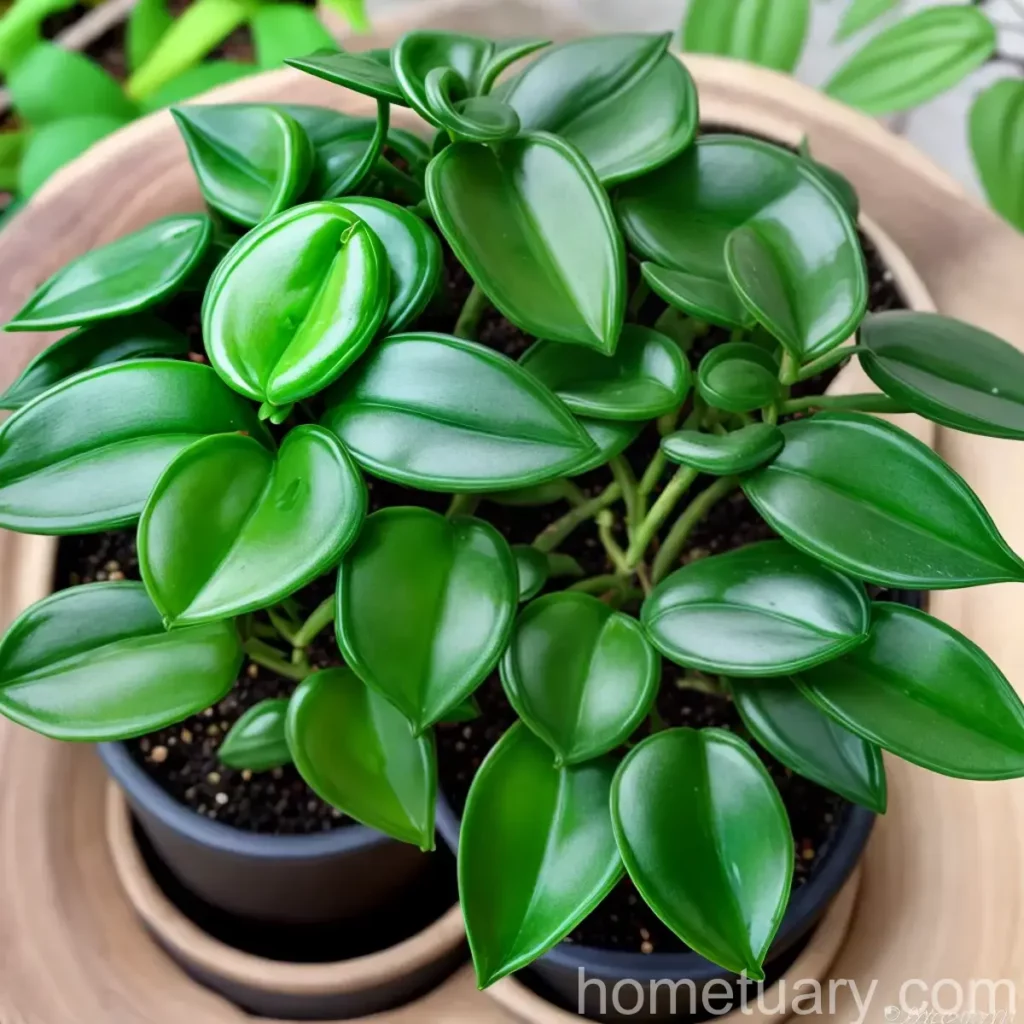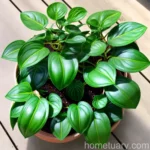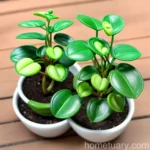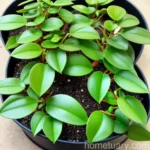All About the Emerald Ripple Pepper Plant (Peperomia Caperata)
Peperomia caperata, commonly known as the emerald ripple pepper, is a unique and visually striking plant that has gained popularity among indoor gardeners for its attractive foliage and ease of care. In this comprehensive guide, we will delve into the various aspects of nurturing and maintaining this beautiful plant, including its cultural requirements, common uses, propagation techniques, potential diseases and pests, as well as interesting fun facts. Whether you’re a beginner or an experienced indoor gardener, there’s something for everyone to learn about cultivating and appreciating the emerald ripple pepper.
Plant Name: Emerald Ripple Pepper (Peperomia caperata)
Key Takeaways
- Scientific Name: Peperomia caperata
- Common Name: Emerald Ripple Pepper
- Varieties: Various cultivars with distinct leaf patterns and colors
- Difficulty Level: Easy to moderate
- Growth Habit: Low, trailing, and compact
- Suitable for: Indoor cultivation, terrariums, and small spaces
- Special Feature: Distinct rippled and textured leaves
Culture
The emerald ripple pepper, native to Brazil, bears unique rippled green leaves that add an eye-catching aesthetic to any indoor space. Its compact size and attractive foliage make it an ideal choice for those looking to introduce a touch of greenery into their homes. Let’s explore the various cultural requirements for cultivating and nurturing the emerald ripple pepper.
Uses
- Ornamental: The emerald ripple pepper is primarily cultivated for its decorative foliage, making it a popular choice for indoor plant enthusiasts.
- Air-Purifying Qualities: Like many other indoor plants, Peperomia caperata contributes to air purification, enhancing the overall air quality within indoor spaces.
Water
Proper watering is crucial for the health and vitality of the emerald ripple pepper.
- Optimal Watering Interval: Water the plant when the top 1-2 inches of the soil feel dry to the touch.
- Avoid Overwatering: It’s important to prevent waterlogging, as excessive moisture can lead to root rot and other complications. Choosing well-draining soil and pots with drainage holes can help prevent water-related issues.
Sunlight
In terms of sunlight requirements, the emerald ripple pepper prefers moderate to bright indirect light.
- Ideal Lighting Conditions: Place the plant in a location where it can receive bright, indirect light for several hours each day.
- Avoid Direct Sunlight: Protect the plant from prolonged exposure to direct sunlight, as this can scorch the delicate leaves.
Fertilizer
Periodic feeding with a balanced, water-soluble fertilizer can support the growth and vitality of the emerald ripple pepper.
- Fertilization Frequency: Apply a diluted, balanced liquid fertilizer every 4-6 weeks during the growing season (spring and summer).
- Limit Feeding in Winter: Reduce or suspend fertilization during the plant’s dormant phase in the winter.
Soil
Optimal soil conditions are essential for the emerald ripple pepper’s well-being.
- Well-Draining Soil: Choose a well-aerated, well-draining potting mix to prevent waterlogging and maintain healthy root conditions.
- Peat-Based Mix: A peat-based potting mix with added perlite or sand can provide the ideal growing medium for Peperomia caperata.
Pruning
Regular pruning can help maintain the tidy appearance of the emerald ripple pepper and promote healthy growth.
- Trimming Leggy Growth: Remove any leggy or straggly stems to encourage bushier growth.
- Prune Yellowed Leaves: Trim away any yellowed or damaged leaves to maintain the plant’s aesthetic appeal.
Propagation
Propagating the emerald ripple pepper is relatively straightforward and offers an opportunity to expand your plant collection.
- Stem Cuttings: Propagate the plant from stem cuttings taken during the growing season, ensuring that each cutting has several leaves.
- Rooting in Water or Soil: Place the cuttings in water or a suitable potting mix, providing the necessary warmth and humidity for successful root development.
Container
The choice of a suitable container is an important consideration when cultivating the emerald ripple pepper.
- Size: Select a container that accommodates the plant’s compact growth habit and allows for adequate drainage.
- Drainage Holes: Ensure that the container has drainage holes to prevent water from accumulating at the bottom.
Popularity
As an indoor plant, the emerald ripple pepper has gained popularity among gardening enthusiasts and plant lovers for its unique appearance and relatively low-maintenance requirements.
- Rising Demand: The emerald ripple pepper has been increasingly sought after as a decorative houseplant, especially for its appealing foliage and adaptability to indoor environments.
- Social Media Influence: Its visually appealing leaves and overall charm have contributed to its prominence on various social media platforms as a favored indoor plant choice.
Common Diseases
While the emerald ripple pepper is generally resilient, it is susceptible to a few common plant diseases that can impact its growth and appearance.
- Root Rot: Overwatering and poorly draining soil can lead to root rot, causing the plant to wilt and exhibit signs of stress.
- Powdery Mildew: Excessive humidity and poor air circulation can result in powdery mildew, characterized by a white powdery growth on the leaves.
Disease Diagnosis
Early detection and prompt intervention are crucial for managing and mitigating the impact of diseases on the emerald ripple pepper.
- Monitoring: Regularly inspect the plant for any signs of wilting, yellowing, or unusual growth patterns.
- Isolation: If disease symptoms manifest, isolate the affected plant to prevent the spread of the issue to other nearby plants.
Common Pests
Despite being relatively resistant to pests, the emerald ripple pepper may occasionally face challenges from common indoor plant pests.
- Mealybugs: These small, white insects can cluster on the undersides of leaves and along the stems, sapping the plant’s vitality.
- Spider Mites: These tiny arachnids can produce fine webbing on the plant and cause stippling or discoloration of the leaves.
Botanist’s Tips
To ensure the thriving and well-being of the emerald ripple pepper, consider the following expert tips and recommendations:
- Temperature Considerations: Maintain a consistent room temperature of around 65-75°F (18-24°C) for optimal growth.
- Humidity Management: Provide moderate humidity levels, especially during the winter months, to support the plant’s overall health and appearance.
Fun Facts
Get to know some intriguing and delightful facts about the emerald ripple pepper plant:
- Native Habitat: Peperomia caperata is indigenous to Brazil, where it thrives in the warm, humid conditions of the tropical rainforests.
- Leaf Texture: The distinct rippled and textured leaves of the emerald ripple pepper make it a visually captivating and sought-after plant for indoor cultivation.
Links to External Resources
To further expand your knowledge and appreciation of the emerald ripple pepper, consider exploring the following external resources:
- Peperomia caperata: An Overview
- Guide to Successful Propagation of Peperomia caperata
- Managing Common Pests and Diseases in Peperomia caperata
- Indoor Plant Care Tips for Peperomia caperata
In conclusion, the emerald ripple pepper (Peperomia caperata) offers an alluring combination of beauty and resilience, making it an excellent choice for indoor gardeners seeking a visually captivating and low-maintenance plant. By understanding and addressing its cultural needs, potential challenges, and unique attributes, you can cultivate and enjoy the charming presence of the emerald ripple pepper in your indoor spaces. Whether you’re a beginner or a seasoned plant enthusiast, the emerald ripple pepper is sure to add a touch of elegance and greenery to your home.















